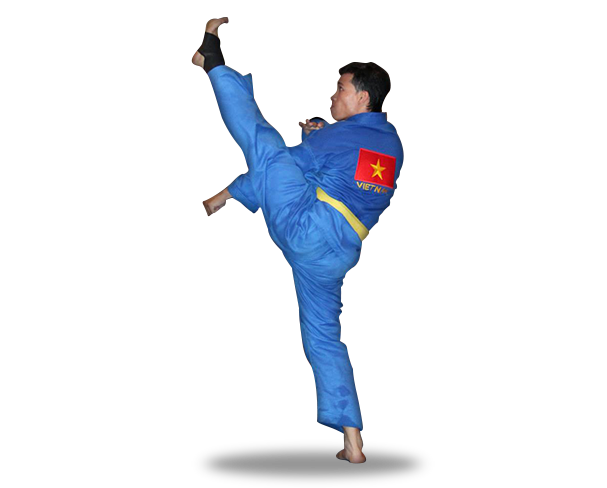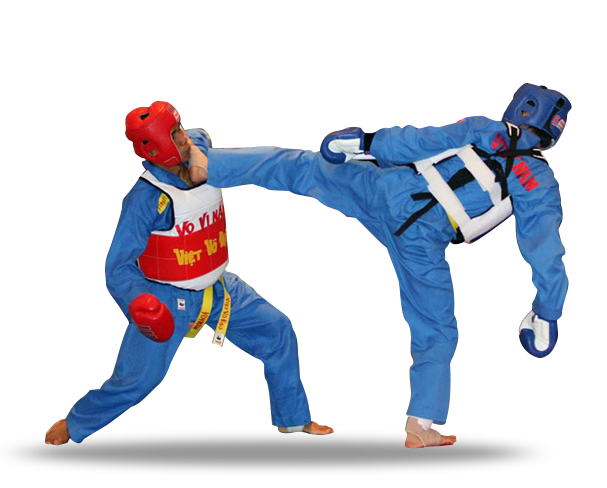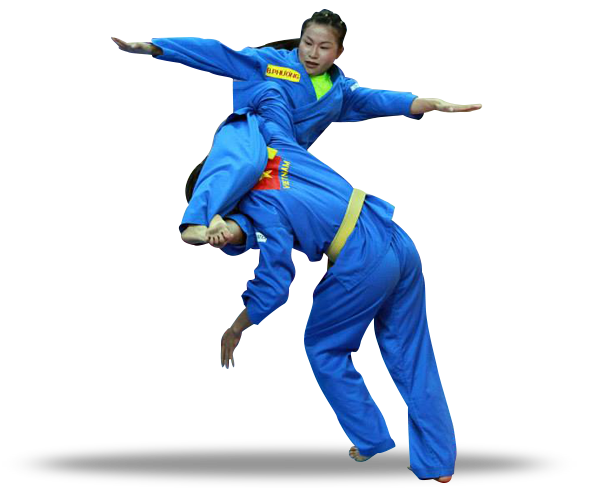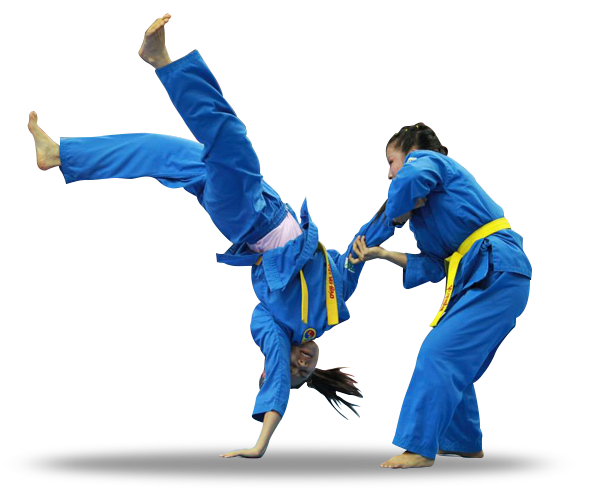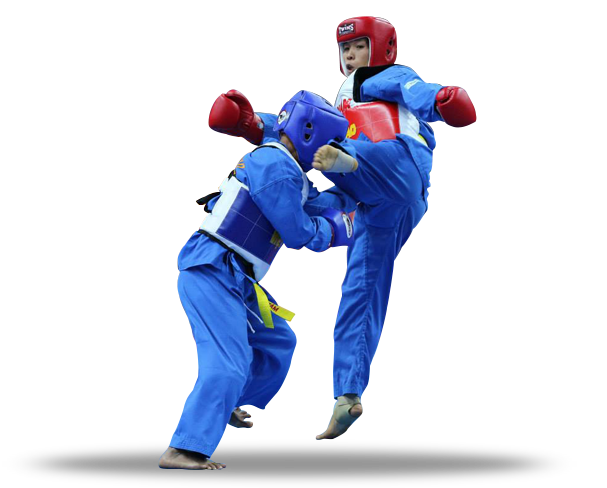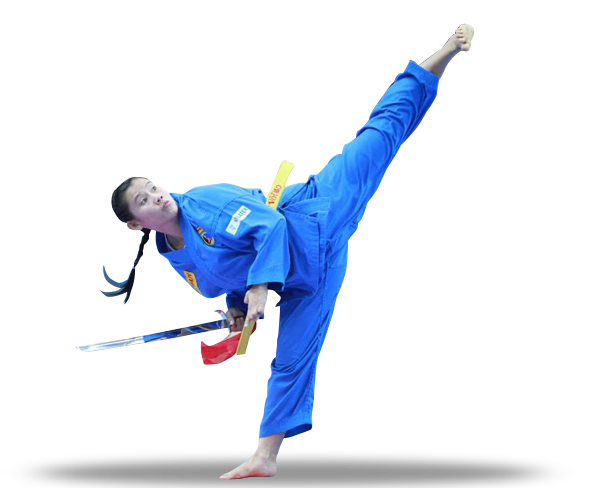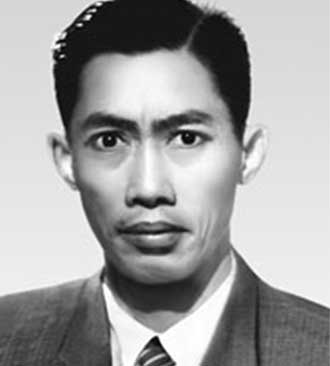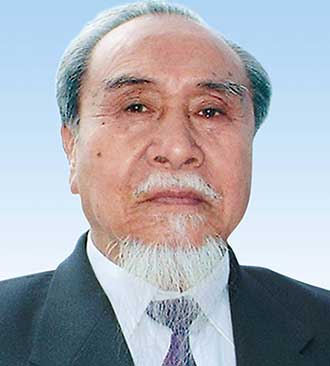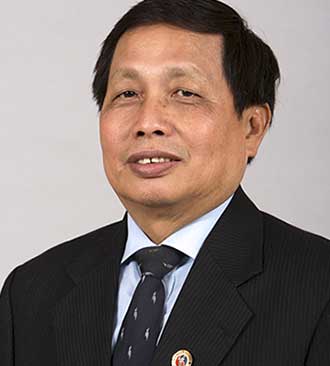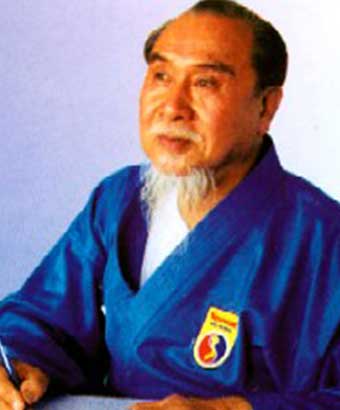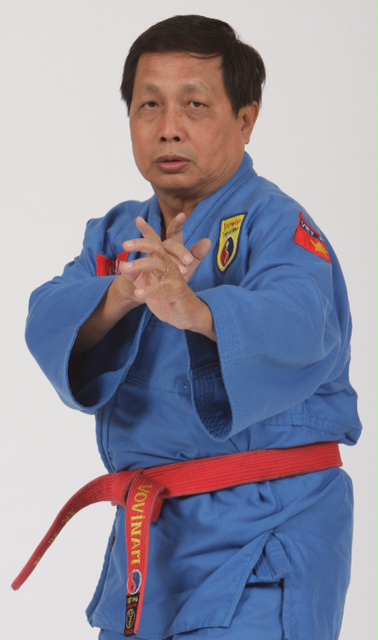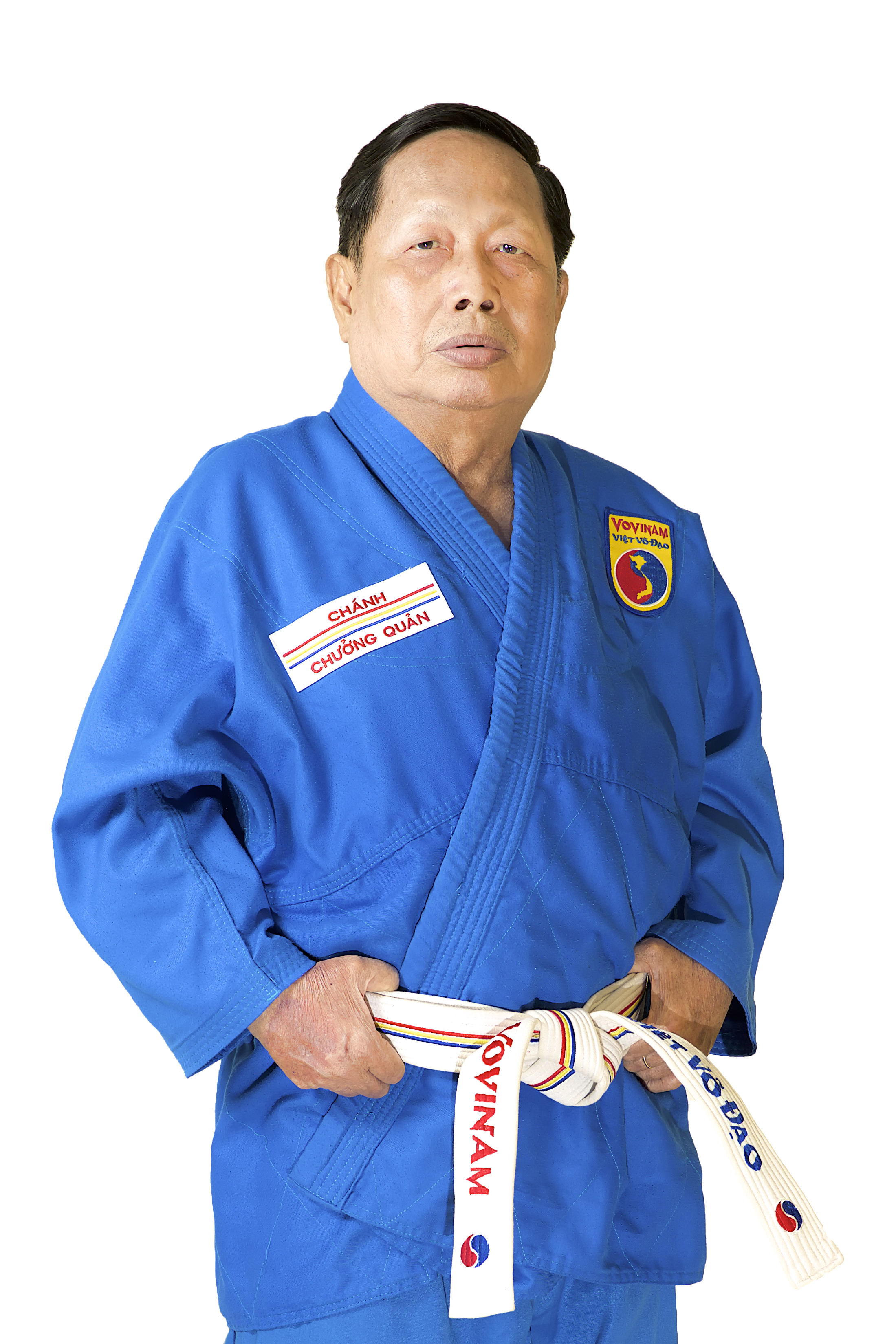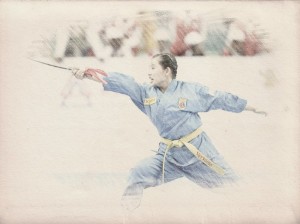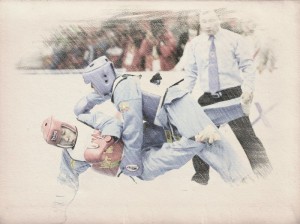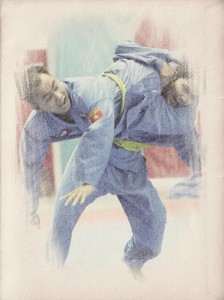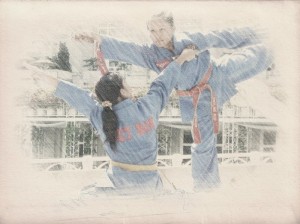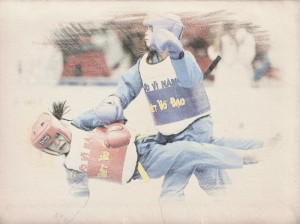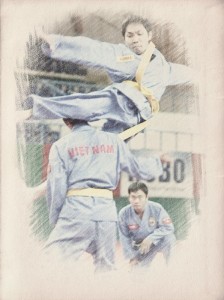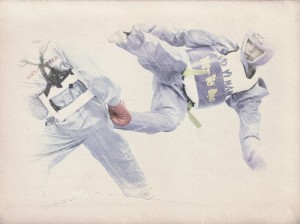Up
Founder Master and the first steps (1938-1960)
The founder master Nguyễn Lộc was born on the 8th day of the 4th month of the rat year (lunar calendar), which corresponds to the 24th of April 1912 of the western calendar, in the village of Hữu Bằng – Thạch Thất district – Sơn Tây province (which nowadays belongs to Hà Nội). He was the eldest of 5 children (Nguyễn Thị Thái, Nguyễn Dần, Nguyễn Ngọ and Nguyễn Thị Sinh), son of Mr Nguyễn Đình Xuyến and Mrs Nguyễn Thị Hòa. His family and ancestors had been living for several generations in Hữu Bằng. After some time, in order to subsist, Mr Nguyễn Đình Xuyến moved his family to a modest house in Harmand Rousseau street (behind Hôm market in Hà Nội). When the young Lộc started school, his father sent him to an old martial arts master, to learn fighting and traditional wrestling techniques, as he thought it would
be beneficial to Lộc’s health and so that he could defend himself.
Mr Nguyễn Lộc grew up in a Việt Nam which had been colonized by France for more than half a century. He was an intelligent and patriotic young man and gave himself the mission of building a generation of people extremely virtuous, having a mindset oriented towards victory and initiative, who could surpass their own weaknesses and empower themselves with a strong spirit, so that they could reach a better life, following the motto: “Live, help other people live, and live for other people.”
These high aspirations pushed him, in addition to instructing himself in moral education, and general culture, to reserve some time to study various martial arts and collect their best techniques. Nights and days he was studying, and his best friends were his books, which ranged from Philosophy, Literature and History to Medical sciences and physiology.
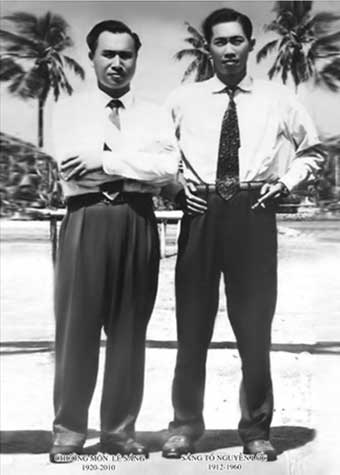
He was analyzing very attentively all matters relating to martial arts, to the smallest detail. His steps are everywhere, from the border of the Red river, to Phà Đen quay, the Bác Cổ institute or Hà Nội Opera House, where he practiced his quyềns and weapons techniques…starting often before dawn. Beside this, he was also taking part in different martial arts classes, and was attending fights or discussing with other experts, in order to find techniques from different styles (including Chinese, Japanese, Thai styles and even Boxing) which would be at the same time aesthetic, efficient and simple. Mr Nguyễn Lộc realized this way that every martial art had his own advantages. Some were based on force, with rigid and strong techniques, while some were based on flexibility, with rapid, agile and mobile techniques, using less strength. As for Vietnamese styles, they were quite original, reconciling force and flexibility. Their techniques could be easily adapted to all peoples, irrespective of their specific physical characteristics. Because some Vietnamese styles had been established a long time ago,
Mr Nguyễn Lộc was aware that some techniques were not really suitable anymore, often incompatible with modern ways of training. Despite this, Mr Nguyễn Lộc was of the opinion that these techniques had still a useful pedagogical aspect not to neglect, especially as they would help develop the sense of balance, precision, agility: abilities that everyone needs, whatever the period they live in. It was therefore essential for Mr Nguyễn Lộc to design more modern teaching methods in order to transmit the ancient techniques, in such a way that they would keep their original character, but at the same time be compatible with the modern culture and state of mind of people of his generation. Starting from traditional Vietnamese wrestling and martial arts techniques as foundations, Mr Nguyễn Lộc then added the best techniques from the other styles he had been studying to codify his own new discipline, which he named Vovinam, short and internationalized version for “Võ Việt Nam”, which literally means “Vietnamese martial art”. He chose that name as it was easy to read and to remember. During the Autumn of 1938, once his research was accomplished, Mr. Nguyễn Lộc set up a trial class for some of his close friends. At the same time, he was continuously improving the Vovinam programme, both on its theoretical and technical aspects. Almost a year later, with his first generation of students, he presented Vovinam to the public at the Hanoi Opera (Nhà Hát Lớn Hà Nội). It was a great success for Vovinam as it attracted a large number of spectators. In order to facilitate the spread and development of his “spiritual baby”, Mr Nguyễn Lộc accepted the invitation of Dr. Đặng Vũ Hỷ, chief of the “Association of friends of Sports”, to organize Vovinam classes for the youth. The first public class opened in the Spring of 1940, at the Pedagogy School of Hanoi. Many other classes followed, at the Septo field, Nhà Đèn field, the Agriculture University, etc. During the next 15 years or so (1940-1954), Vovinam became very popular in Hà Nội, and the surrounding areas, like Sơn Tây, Nam Định, Thanh Hóa,…
According to Master Chưởng Môn Lê Sáng, although the programme was already structured in three levels (beginner, intermediate and advanced), very few students would train for more than 3 years, because of the political and social situation at that period, because of prohibitions from the French colonialists. Only a handful of people were training secretly. The public classes usually spanned only over three months, and included: physical condition training, stances, strength training, crawling, falls and rolls, basic self defense and locks, counter attacks as well as 4 dual forms, self defense against sword, the long stick, machete, 21 offensive leg techniques (those were included in the dual forms. They were not practiced on their own.). During training sessions or demonstrations, pratitioners would wear short trousers and bare-chested.
In 1945, Mr Nguyễn Lộc married Ms Nguyễn Thị Minh, daughter of Mr Nguyễn Ngọc Hoán and Mrs Bùi Thị Ngọ, which whom he got 9 children (3 boys and 6 girls): Nguyễn Đạo, Nguyễn Chính, Nguyễn Quang, Nguyễn Thanh Phương, Nguyễn Thanh Mai, Nguyễn Thanh Ngà, Nguyễn Thanh Phú, Nguyễn Thanh Bình and Nguyễn Thanh Mỹ. Mr. Nguyễn Lộc was of strong stature (above 90 kg) and though he was a famous martial arts master. With a hot pot of tea and a cigarette pack aside, he found himself immersed in day long and sometimes even night long literature, fine arts and photography discussion with his friends and disciples. Sociable and kind, he was respected by everyone around him. Gentle, harmonious, simple, Mr. Nguyễn Lộc insisted that the disciples called him “Anh Lộc” (Brother Lộc). Even so, he was very strict, cautious, and had high expectations for himself and his disciples when it came to training.
In 1955, Founder Master Nguyễn Lộc opened the training center at 58 Avigateur Garros Street (now is Thủ Khoa Huân St, District 1, Ho Chi Minh City). Leaving Thủ Khoa Huân, he resided at his own home on Nguyễn Khắc Nhu St. Unfortunately, at the time when the work of promoting Vovinam in the new region of Ho Chi Minh City still had many difficulties, Founder Master Nguyễn Lộc departed from our world on the 4th day of the 4th month of the rat year (lunar calendar) – 29/04/1960, after a few years suffering from a critical illness, leaving behind many grieving family and disciples. Currently, his remains is protected and preserved at Tổ Đường (31 Sư Vạn Hạnh, District 10, Ho Chi Minh City, Vietnam)


